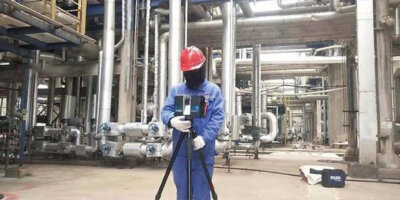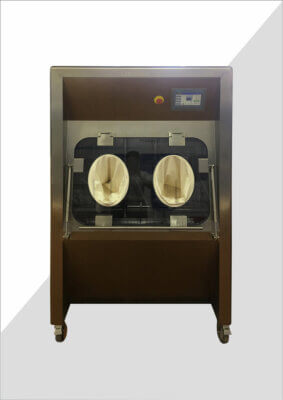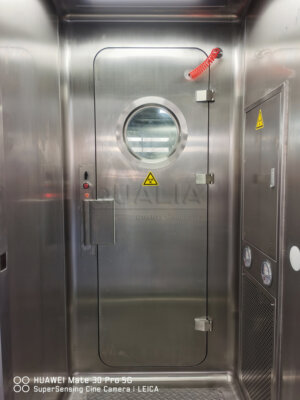In the ever-evolving landscape of environmental protection and waste management, thermal treatment has emerged as a cornerstone technology in effluent decontamination systems. This innovative approach is transforming the way industries handle and process contaminated liquid waste, ensuring safer and more efficient disposal methods.
The use of thermal treatment in effluent decontamination systems has gained significant traction in recent years, offering a robust solution to the challenges posed by hazardous liquid waste. This article will delve into the intricacies of thermal treatment, exploring its mechanisms, applications, and the substantial benefits it brings to various industries. From continuous flow systems to batch processing methods, we'll examine how thermal treatment is setting new standards in effluent decontamination.
As we navigate through the complexities of thermal treatment in effluent decontamination systems, we'll uncover the key factors that make this technology indispensable in modern waste management practices. We'll explore the science behind the process, the latest advancements in system design, and the regulatory landscape shaping its implementation.
Thermal treatment in effluent decontamination systems is a cutting-edge technology that utilizes high temperatures to effectively neutralize hazardous biological and chemical contaminants in liquid waste, ensuring safe disposal and environmental protection.
| Thermal Treatment Method | Temperature Range | Processing Time | Energy Efficiency | Contaminant Removal Efficiency |
|---|---|---|---|---|
| Continuous Flow | 121°C – 134°C | 15-30 minutes | High | 99.9999% |
| Batch Steam | 121°C – 134°C | 30-60 minutes | Medium | 99.9999% |
| Thermochemical | 80°C – 100°C | 60-120 minutes | Low | 99.99% |
How does thermal treatment work in effluent decontamination?
Thermal treatment in effluent decontamination systems operates on a simple yet powerful principle: the application of heat to destroy harmful microorganisms and break down hazardous compounds. This process involves raising the temperature of the effluent to a specific range, typically between 121°C and 134°C, and maintaining it for a predetermined period.
The effectiveness of thermal treatment lies in its ability to denature proteins and disrupt cellular structures of microorganisms, rendering them harmless. For chemical contaminants, the high temperatures can accelerate decomposition or transformation into less harmful substances.
In practice, thermal treatment can be implemented through various methods, including steam injection, heat exchangers, or direct electrical heating. The choice of method depends on factors such as the volume of effluent, the nature of contaminants, and the specific requirements of the facility.
According to industry experts, thermal treatment can achieve a 6-log reduction in microbial populations, effectively eliminating 99.9999% of harmful organisms in treated effluent.
| Treatment Phase | Temperature (°C) | Duration (minutes) | Pressure (bar) |
|---|---|---|---|
| Preheating | 60-80 | 10-15 | 1-2 |
| Sterilization | 121-134 | 15-30 | 2-3 |
| Cooling | 80-40 | 10-20 | 1-2 |
What are the advantages of continuous flow systems in thermal treatment?
Continuous flow systems represent a significant advancement in thermal treatment technology for effluent decontamination. These systems are designed to process large volumes of liquid waste continuously, offering several advantages over batch processing methods.
One of the key benefits of continuous flow systems is their efficiency in handling high-volume waste streams. By maintaining a constant flow of effluent through heated pipework or chambers, these systems can treat waste without interruption, making them ideal for facilities with continuous production processes.
Moreover, continuous flow systems often incorporate energy recovery mechanisms, which significantly improve their overall efficiency. By recapturing heat from treated effluent and using it to preheat incoming waste, these systems can reduce energy consumption and operational costs.
Studies have shown that continuous flow thermal treatment systems can reduce energy consumption by up to 30% compared to traditional batch processing methods, while maintaining equivalent or superior decontamination efficacy.
| System Feature | Benefit |
|---|---|
| Continuous Processing | Higher throughput, reduced downtime |
| Energy Recovery | Lower operational costs, improved efficiency |
| Compact Design | Smaller footprint, easier installation |
| Real-time Monitoring | Enhanced process control, consistent results |
How does batch steam processing compare to continuous flow in effluent decontamination?
Batch steam processing is another widely used method in thermal treatment for effluent decontamination. Unlike continuous flow systems, batch processing involves treating a fixed volume of effluent in a single cycle. This method has its own set of advantages and is particularly suitable for certain applications.
One of the primary benefits of batch steam processing is its flexibility. It can handle a wide range of effluent types, including those with varying viscosities or solid content. This makes it an excellent choice for facilities that deal with diverse waste streams or those that require frequent changes in treatment parameters.
Batch systems also offer precise control over the treatment process. Each batch can be monitored and adjusted individually, ensuring that the required temperature and pressure are maintained for the specified duration. This level of control is particularly crucial when dealing with highly hazardous or resistant contaminants.
Industry data indicates that batch steam processing can achieve sterilization levels equivalent to continuous flow systems, with the added advantage of accommodating effluents with up to 5% solid content without compromising treatment efficacy.
| Batch Process Stage | Duration (minutes) | Temperature (°C) | Pressure (bar) |
|---|---|---|---|
| Filling | 10-15 | Ambient | 1 |
| Heating | 20-30 | 121-134 | 2-3 |
| Sterilization | 30-60 | 121-134 | 2-3 |
| Cooling | 20-30 | 134-40 | 3-1 |
| Discharge | 10-15 | 40-Ambient | 1 |
What role does temperature play in the efficacy of thermal treatment?
Temperature is a critical factor in the effectiveness of thermal treatment for effluent decontamination. The choice of operating temperature directly impacts the system's ability to neutralize pathogens and break down hazardous compounds.
Most thermal treatment systems operate within a temperature range of 121°C to 134°C. This range has been established through extensive research and practical application, proving effective against a wide spectrum of microorganisms and many chemical contaminants.
The relationship between temperature and treatment time is inverse – higher temperatures generally allow for shorter treatment times while achieving the same level of decontamination. However, it's crucial to balance this with energy efficiency and the potential for thermal degradation of the effluent or system components.
Research has demonstrated that increasing the treatment temperature from 121°C to 134°C can reduce the required exposure time by up to 75% while maintaining equivalent sterilization efficacy, potentially leading to significant improvements in system throughput.
| Temperature (°C) | Minimum Exposure Time (minutes) | Log Reduction of Bacterial Spores |
|---|---|---|
| 121 | 15 | 6 |
| 126 | 10 | 6 |
| 134 | 3 | 6 |
How do effluent characteristics influence the choice of thermal treatment method?
The characteristics of the effluent play a crucial role in determining the most appropriate thermal treatment method. Factors such as viscosity, solid content, chemical composition, and biological load all influence the design and operation of the decontamination system.
For effluents with high solid content or variable composition, batch steam processing often proves more suitable. These systems can handle a wider range of effluent types and allow for adjustments between batches to accommodate changing waste characteristics.
On the other hand, continuous flow systems are typically more efficient for large volumes of relatively consistent liquid waste. They excel in treating effluents with low solid content and uniform properties, making them ideal for many industrial and pharmaceutical applications.
Analysis of treatment data from various industries shows that effluents with solid content exceeding 2% are generally more effectively treated using batch steam systems, while those below 1% solid content can be efficiently processed in continuous flow systems.
| Effluent Characteristic | Recommended Treatment Method | Rationale |
|---|---|---|
| High Solid Content (>2%) | Batch Steam | Better handling of solids, adjustable parameters |
| Low Solid Content (<1%) | Continuous Flow | Higher throughput, energy efficiency |
| Variable Composition | Batch Steam | Flexibility to adjust between batches |
| Consistent Composition | Continuous Flow | Optimized for steady-state operation |
| High Viscosity | Batch Steam | Improved heat transfer, mixing |
| Low Viscosity | Continuous Flow | Efficient flow dynamics, heat exchange |
What safety considerations are essential in thermal treatment systems?
Safety is paramount in the design and operation of thermal treatment systems for effluent decontamination. These systems deal with potentially hazardous materials at high temperatures and pressures, necessitating robust safety measures and protocols.
One of the primary safety considerations is pressure management. Thermal treatment systems often operate at elevated pressures, requiring carefully designed pressure vessels, safety valves, and monitoring systems to prevent accidents. Regular maintenance and inspection of these components are crucial to ensure their reliability.
Another critical aspect is the prevention of cross-contamination. This involves implementing proper sealing mechanisms, air locks, and decontamination procedures for personnel and equipment. Advanced systems may incorporate features like double-wall construction and leak detection systems to provide an additional layer of protection.
Industry standards mandate that thermal treatment systems for effluent decontamination must undergo rigorous safety testing and certification, with requirements for redundant safety systems and fail-safe mechanisms to prevent the release of untreated effluent under any circumstances.
| Safety Feature | Purpose | Implementation |
|---|---|---|
| Pressure Relief Valves | Prevent over-pressurization | Automatic release at set pressure |
| Double-Wall Construction | Containment of leaks | Secondary containment around primary vessel |
| Automated Control Systems | Ensure consistent operation | PLC-based control with safety interlocks |
| Emergency Shutdown | Rapid system halt in case of malfunction | Multiple trigger points, manual override |
| Effluent Quality Monitoring | Verify treatment efficacy | Real-time sensors, automated sampling |
How is energy efficiency maximized in thermal treatment processes?
Maximizing energy efficiency is a key consideration in the design and operation of thermal treatment systems for effluent decontamination. Given the high temperatures required for effective treatment, energy consumption can be a significant factor in operational costs and environmental impact.
One of the primary methods for improving energy efficiency is through heat recovery systems. These systems capture and reuse the heat from treated effluent to preheat incoming waste, significantly reducing the overall energy input required. Advanced heat exchangers and intelligent control systems play a crucial role in optimizing this process.
Another approach is the use of insulation and thermal management techniques to minimize heat loss throughout the system. This includes not only insulating the treatment vessels and pipework but also carefully designing the system layout to reduce thermal bridging and optimize heat flow.
Recent advancements in thermal treatment technology have led to systems that can achieve up to 80% energy recovery, resulting in substantial reductions in operational costs and carbon footprint compared to traditional methods.
| Energy Efficiency Measure | Potential Energy Savings | Implementation Complexity |
|---|---|---|
| Heat Recovery Systems | 30-50% | Medium |
| Advanced Insulation | 10-20% | Low |
| Optimized Process Control | 15-25% | High |
| High-Efficiency Heat Sources | 20-30% | Medium |
| Waste Heat Utilization | 10-15% | High |
In conclusion, thermal treatment has established itself as a cornerstone technology in effluent decontamination systems, offering a potent solution to the challenges of hazardous liquid waste management. From continuous flow systems to batch processing methods, thermal treatment provides a versatile and effective approach to neutralizing biological and chemical contaminants.
The success of thermal treatment lies in its ability to achieve high levels of decontamination while offering flexibility to accommodate various effluent characteristics. Whether through the efficiency of continuous flow systems or the adaptability of batch steam processing, thermal treatment can be tailored to meet the specific needs of different industries and waste streams.
As we've explored, factors such as temperature control, safety considerations, and energy efficiency play crucial roles in the effectiveness and sustainability of these systems. The ongoing advancements in thermal treatment technology, including improved heat recovery mechanisms and sophisticated control systems, continue to enhance its efficacy and reduce its environmental impact.
Looking forward, the field of thermal treatment in effluent decontamination is poised for further innovation. As industries face increasingly stringent environmental regulations and growing volumes of complex waste streams, the demand for more efficient, versatile, and sustainable decontamination solutions will drive continued development in this critical area.
Qualia's Effluent Decontamination System (EDS) for BSL-2, 3, and 4 Liquid Waste represents the cutting edge of this technology, offering state-of-the-art solutions for the most challenging decontamination needs. As we continue to push the boundaries of what's possible in effluent treatment, thermal processing will undoubtedly remain at the forefront, ensuring safer, cleaner, and more sustainable waste management practices for years to come.
External Resources
CONTINUOUS FLOW DECONTAMINATION SYSTEM – ABC Actini – This page details a continuous flow thermal decontamination system capable of handling large volumes of biowaste effluent, with features such as customizable models, steam or electric heating, and energy recovery systems.
ThermoBatch Systems | Effluent Decontamination | PRI BIO – This resource describes a batch effluent decontamination system that uses a combination of time and temperature to treat biowaste effluent, particularly suitable for high containment facilities and flexible enough to handle liquids and liquid/solid mixtures.
Effluent Decontamination System – Wikipedia – This article provides a comprehensive overview of effluent decontamination systems, including types such as continuous flow, batch steam, and batch chemical systems, and explains the processes and components involved in thermal treatment.
EDS – Effluent Decontamination Systems – Burt Process Equipment – This page offers various types of effluent decontamination systems, including high-temperature continuous batch and continuous flow systems, highlighting their capabilities and applications in different bio-safety levels.
Effluent Decontamination Systems | Biowaste Sterilization | PRI BIO – This resource provides detailed information on selecting the appropriate effluent decontamination system based on the characteristics of the waste effluent, including thermal and chemical treatment options, and considerations for high biocontainment facilities.
Related Contents:
- Streamlining Effluent Decontamination: Continuous vs. Batch Processing
- Thermal Effluent Decontamination: Protecting Our Environment
- Continuous Effluent Decontamination: Protecting Our Environment
- Effluent Decontamination: Essential for High-Risk Labs
- Effluent Decontamination Systems for Biosafety Laboratories
- Effluent Decontamination: Safeguarding Our Environment
- Efficient Effluent Decontamination: Key Components for Success
- Effluent Decontamination Systems: Safeguarding Labs and Beyond
- Effluent Decontamination Systems: Safeguarding Malaysia’s Environment





























